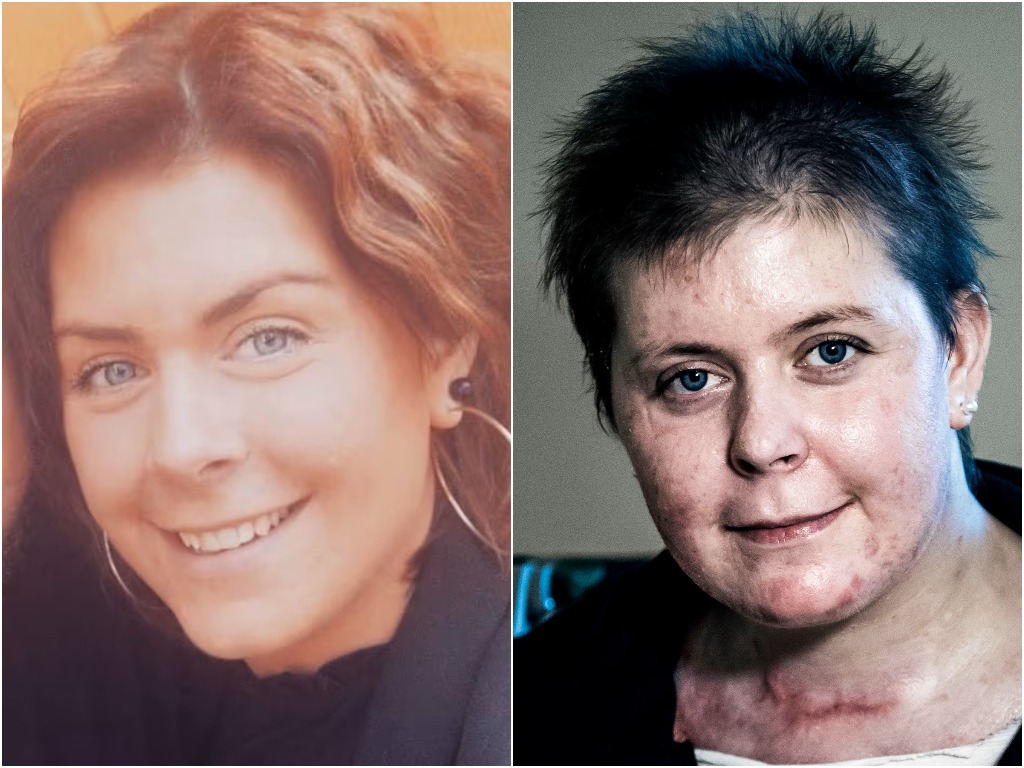In the early morning of September 3, 2019, the quiet town of Edsbyn in southern Hälsingland, Sweden, woke to sirens. Inside a two-story home, 31-year-old Emma Schols woke to the acrid bite of smoke and the sound of her four-year-old son calling from the ground floor: “Fire!”
She ran downstairs. The living room was already burning hard, and two of her youngest boys—Albin, 4, and Oliver, 3—had ducked into a playroom to escape the smoke. She gathered both under her body like a human shield and pushed for the door. When she cracked it, the flames gulped oxygen and blew forward in a blast of heat. The flash seared her back; she felt skin bubble and pull. She shoved the boys outside and locked the front door so they wouldn’t panic and run back in. Then she turned around. Four children were still upstairs. The staircase was on fire. She climbed anyway.

Photo: Sofie Engman
Upstairs, chaos had order. Nellie, 9, had opened the balcony door and jumped down to get help from a neighbor. William, 11, was wrestling a ladder into place so the others could escape. In the hot, choking hallway, Melwin asked if he should fetch a fire extinguisher. Emma sent him to the balcony to yell for help. The smoke was thick; the temperature kept rising. Her feet felt like they were gluing to every step. She could hear the crackle of wood and the strange, windy hiss fire makes when it eats a house from the inside.

Photo: Private
Then came the moment that would brand itself into memory. Mollie, the baby—one year old—wasn’t on the balcony. She was still in the parents’ bedroom, in her crib, somewhere inside a dim, blistering room full of smoke. Emma went back in. Crawling first, then hauling herself onto shaking legs, she pushed through heat so intense it felt solid. She reached the crib. The baby was there—crying, trembling, terrified. Emma’s arms felt like they were lifting iron, but somehow she pulled Mollie up and held her tight. “If I birthed six,” she thought, “I get six out.” She headed for the balcony.
Outside, William had the ladder down. Neighbors were running over. Emma handed instructions through scorched lips; she put Mollie on her hip and started down the rungs. Her skin was so damaged it sloughed and bled as she climbed. On the last step, she collapsed on the grass. The pain arrived all at once, tidal and merciless. But every child was out. Every single one.
Paramedics sedated her. She was rushed to the burn center in Uppsala, where doctors pumped liters of fluid to protect her organs. They told the family the truth: burns over 93% of her body—a figure very few people survive. She spent weeks hovering between life and death, three weeks on a respirator, between surgeries, infections, and grafts. Her first thought when she finally woke was simple and brutal: “Do the children live?” They did. Miraculously, the kids had escaped with little to no lasting physical injury.
The road back was steep. Her fingers were stiff from grafts; mornings meant coaxing scarred skin to stretch; learning to sit, then stand, then walk again. Four months after the fire, after multiple grafts and a crushing bout of pneumonia, she moved from intensive care to a regular ward in Hudiksvall. Nurses asked for a photo with her—to remember what was possible. She kept a picture of her children by the bed to remind herself why she’d fought so hard.

Photo: Private
At first, the littlest one, Mollie, didn’t recognize her mother in the tubes and swelling. That hurt more than the grafts. But visits got longer. The fear eased. The family learned new rhythms around rehab sessions and whispered bedtime stories. Emma promised her eldest that she’d come home soon; it became a mantra she carried through the sleepless, fluorescent nights of the ICU.

Photo: Carolina Byrmo
By December 2020, Sweden took notice. At the televised Svenska Hjältar gala, Emma was named “Årets livräddare” — Lifesaver of the Year. The citation was stark: a mother who went through fire without hesitation and then fought her way back to life. National headlines called her a hero. Emma thanked the country and said what mothers often say: she’d just done what a mom does.
In 2022, she told the story herself—first in a celebrated “Sommar i P1” radio talk, and then in a memoir co-authored with journalist Frida Funemyr, Ärren bär jag med stolthet (“I Wear My Scars with Pride”), about the fire and the stubborn, everyday work of living afterward. She spoke about how survival isn’t a single day; it’s a practice. She explained why she doesn’t call herself a “hero mom,” even if others do. And she described the strange grace of ordinary life returning: school pickups, horse rides, laughter at the dinner table.
Fact by fact, the picture is clear. The fire began downstairs. Two boys were saved first under a living shield of skin. The door blast burned her back. The mother climbed a burning stair. A daughter leapt for help. A son set a ladder. A baby waited in a crib. A mother went back. All six came out alive. The numbers—93% burns, weeks on a respirator, months of hospitalization—sit next to the ordinary heroism of a family that learned to heal.
Today, Emma is widely regarded in Sweden as a symbol of unyielding parental courage. She reminds people that bravery isn’t loud; sometimes it’s a barefoot climb up a burning staircase because love leaves you no other choice. Her story is retold on TV, in print, on stages, and across social feeds—not as a legend but as proof that impossible things sometimes happen when someone refuses to stop.

Photo: Bnc
And the ending? It isn’t a miracle chorus or a slow-motion medal scene. It’s smaller and better. It’s a mother who once thought she might die in the grass at the foot of a ladder making pancakes while six kids argue over who gets the first one—ordinary life, the loudest victory of all.
Sources
-
Aftonbladet – “Jag tänkte att jag måste få ut barnen – sen kunde jag dö” (detailed interview: timeline, 93% figure, Uppsala ICU, balcony rescue, ladder) aftonbladet.se
-
Aftonbladet – “Emma Schols gick genom elden… Nu känner de igen mig” (award write-up; door-blast; balcony/ladder; respirator three weeks; Lifesaver of the Year 2020) aftonbladet.se
-
TT/Vend press release – “Hon gick genom eld för sina barn – Emma är Årets livräddare” (official confirmation of 2020 Lifesaver of the Year) Via TT
-
SVT News Gävleborg (news coverage in Feb 2020 and 2022 follow-up on recovery) SVT Nyheter+1
-
Sveriges Radio – “Sommar i P1: Emma Schols” (Emma’s own account of the morning and recovery) sverigesradio.se
-
Norstedts (publisher) – Ärren bär jag med stolthet (book page confirming 2022 memoir) norstedts.se

